Tropical parakeets ruffle feathers at Belfast park
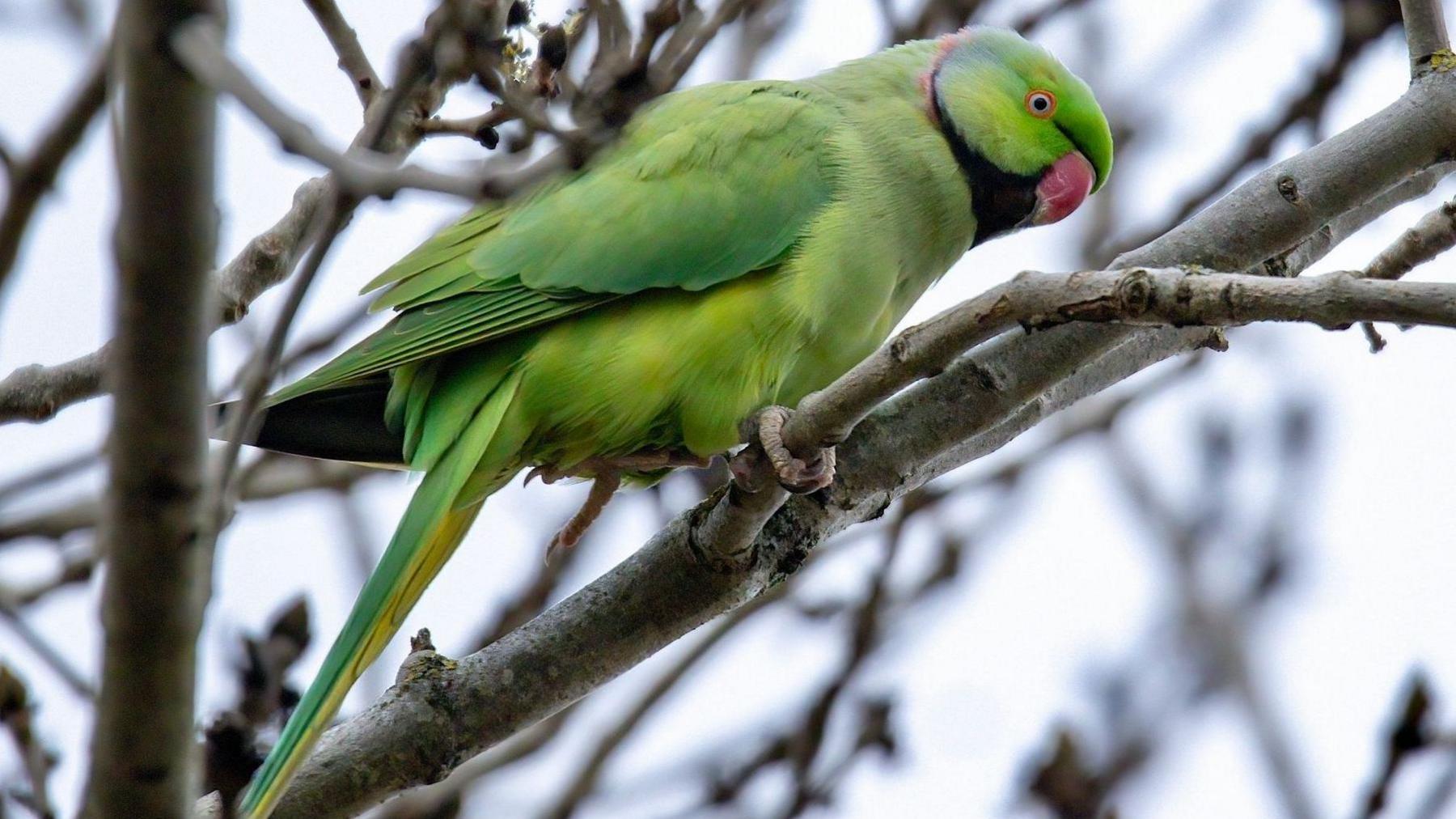
Parakeets have taken up residence in the Waterworks Park
- Published
Amateur wildlife photographers have been flocking to a north Belfast park to spot a tropical new arrival.
Bedecked with emerald green feathers and a rose-red beak, the ring-neck parakeets have become the star attraction at the Waterworks Park.
Originally from the Himalayas, the Indian sub-continent, and parts of Africa, ring-necked parakeets are regularly spotted across the UK, with large populations in London and the south-east of England.
It's estimated that about 15 of these parrots have found a new home in the foothills of Cavehill.
Birdwatchers embrace Belfast parakeets
The RSPB describes ring-necked parakeets, external, sometimes known as rose-ringed parakeets, as the UK's only naturalised parrot.
Dot Blakely, a bird expert who teaches bird-watching courses at Belfast Metropolitan College and Queen's University Belfast (QUB), said she brings students to the park to study the new residents.
"The parakeets are likely to have come over from London," she said. "It's likely they moved across to the Republic of Ireland before moving up."
"We're seeing more birds come across because of climate change, so many birds that we wouldn't have seen here before.
"People still think of it as a tropical bird but it has adapted."

Bird expert Dot Blakely believes the parakeets have likely moved over from London
Ms Blakely told BBC News NI she thinks there are about 13 to15 parakeets living in the park, which indicates they are getting enough food to sustain a small colony and are likely to be breeding.
"There are lots of berries around the area, but lots of locals are leaving seed out for them," she added.
"Sometimes you'll see the birds right up at people's windows waiting to get fed."
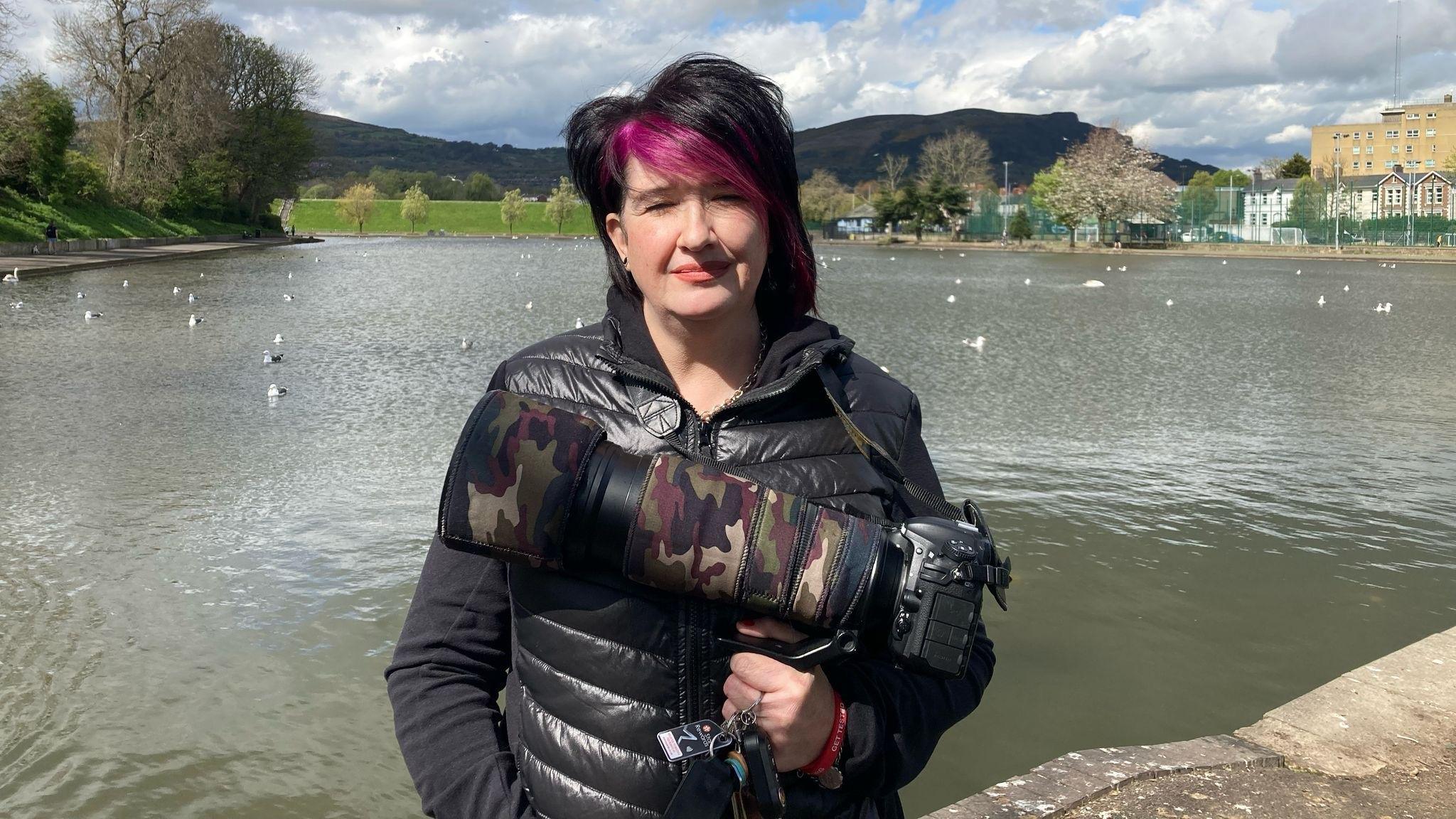
Amateur wildlife photographer Sharon Gregg has been photographing the parakeets
The brightly coloured birds have been attracting amateur photographers to the park.
Sharon Gregg, who took up photography after being diagnosed with a rare illness, told BBC News NI spending time in nature and watching the birds has had a positive effect on her wellbeing.
"When I first heard about the birds last month I would say: 'I'm away to look for the parrots.'
"People would think I was mad," she said.
Ms Gregg has photographed eight parakeets in one sitting before.
"I think the parakeets are such wonderful, special little birds and a lot of people don't even realise they are in the trees up above them," she said.
"They are really comical, cheeky wee things, and they are just a pleasure to watch."
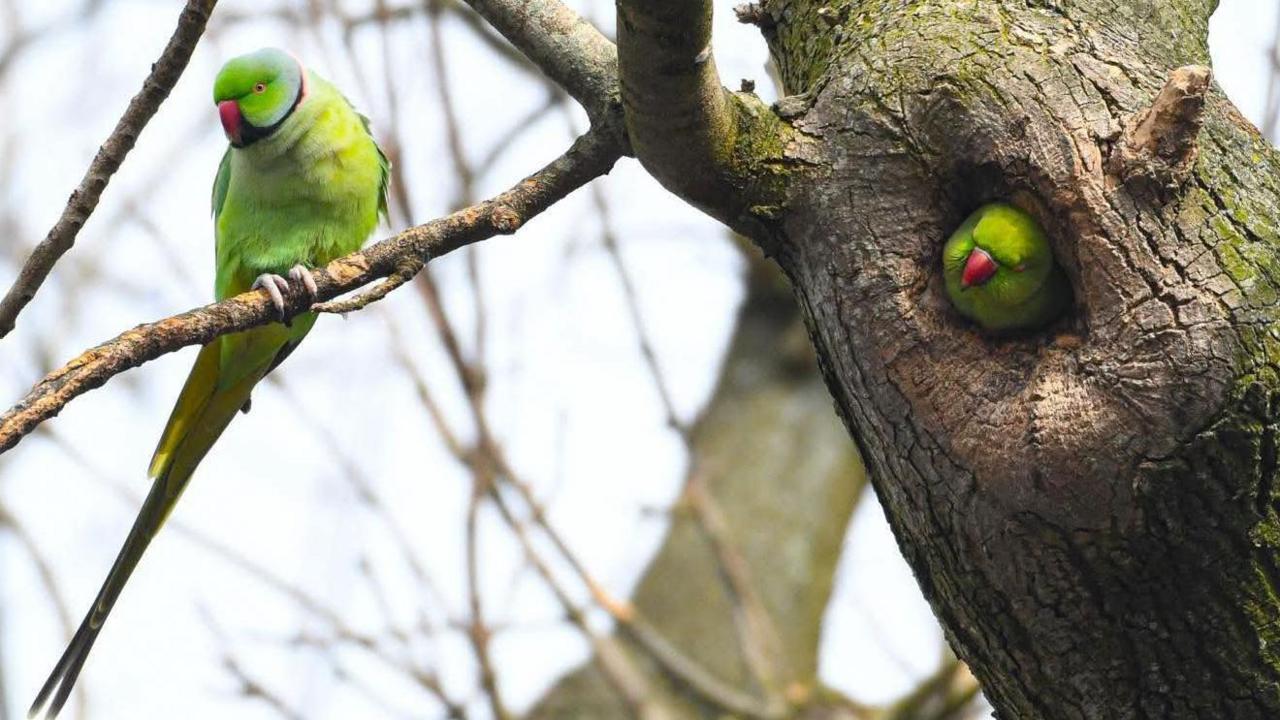
Parakeets have made their homes in trees in north Belfast
Michael Latham, from Bangor, is a keen twitcher, someone who goes to extraordinary lengths to see new bird species.
He has travelled to the area to see the birds a number of times over the past few years.
"The number has grown a bit over the last while," he said.
"There have been reports of breeding, but we think there is only one male."
Did Jimi Hendrix release the parakeets?
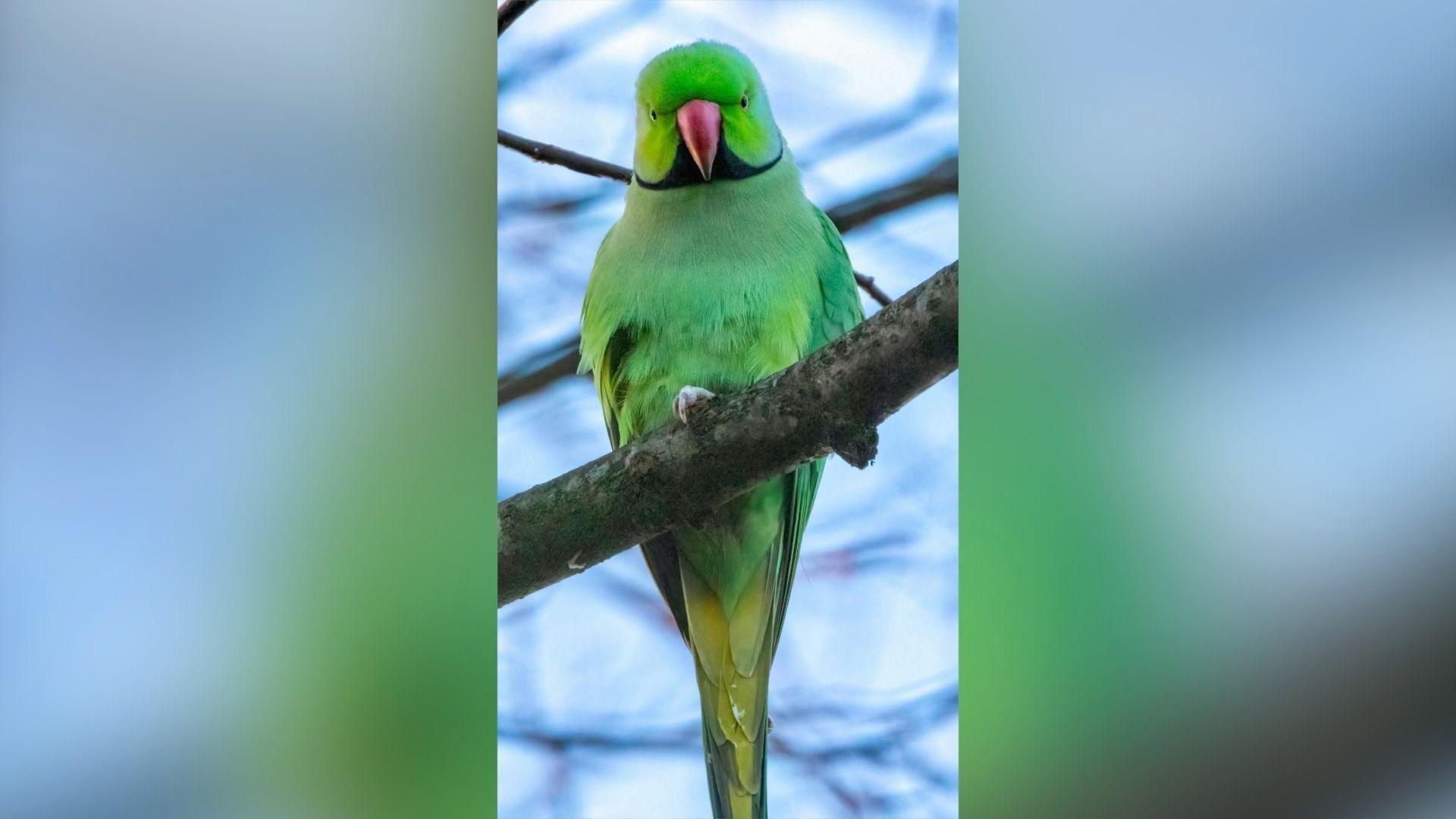
Parakeets have vivid green feathers and a red beak
There has been a longstanding rumour that rock legend Jimi Hendrix is responsible for the parakeets coming to the UK.
The guitarist supposedly released a pair of the birds into the wild while living in Carnaby Street in London in the1960s.
There have also been rumours that the birds escaped across the country during the wrap party for the 1951 film The African Queen starring Humphrey Bogart and Katharine Hepburn.
However, a study published in the Journal of Zoology quashed these rumours.
It suggests that the birds establishment is more likely to be a consequence of repeated releases, external and introductions.
As for why they have moved from London across the UK, Ornithologist Professor Emily Shepherd said: "Urban and suburban parks are their typical environment, so as soon as one area becomes too over-populated or competitive they seem to fly around in search of somewhere else which looks quite similar.
"They thrive in urban and suburban environments. They need people nearby who will either discard or deliberately leave out food for them," she said.
"They are big, tough birds, who are quite capable of bullying even jackdaws and crows out of the way of feeders, and in areas with plentiful food supplies they can survive sub-zero temperatures if they can put on enough winter fat."
Are parakeets an invasive species?

Parakeets make their nests in holes in trees
Parakeets are a non-native bird so they are classed as an invasive species.
Conor McKinney, the chair of Wild Belfast said: "Parakeets may seem like a novel addition to our wildlife, but really they are pose a great risk to birds, bats, and to agriculture.
"Parakeets have the ability to out-compete native cavity nesting species, such as starlings, and have even been known to evict bats from their roosts," he said.
"Preventing the further dispersal of this species is possible, but it needs to happen soon.
"We call on Belfast City Council and the Northern Ireland Environment Agency to return the birds to captivity and negate any potential risks of further spread."
In a statement, the council said they are "currently seeking advice from the relevant government department, the Department of Agriculture, Environment and Rural Affairs (Daera), in regard to the parakeets at Waterworks Park".
Related topics
- Published12 December 2019
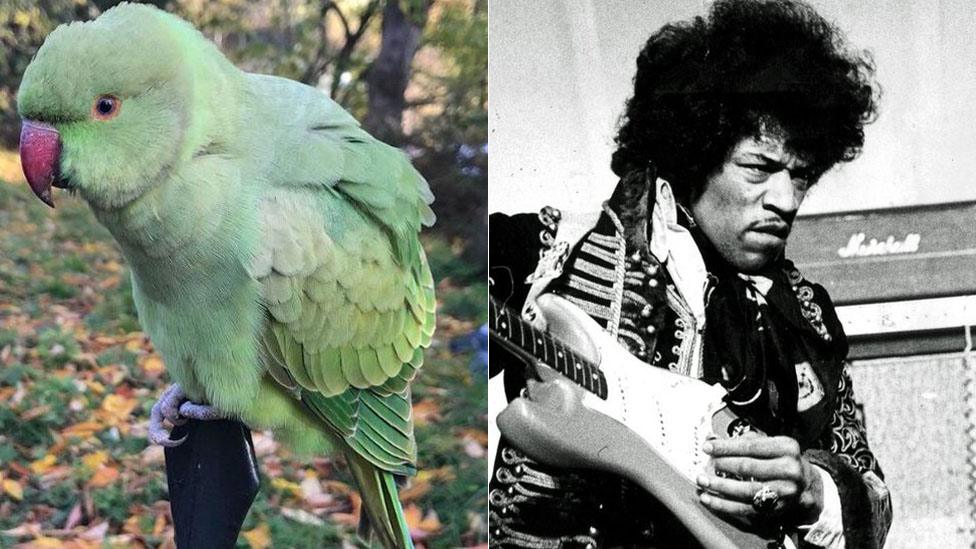
- Published13 April 2019
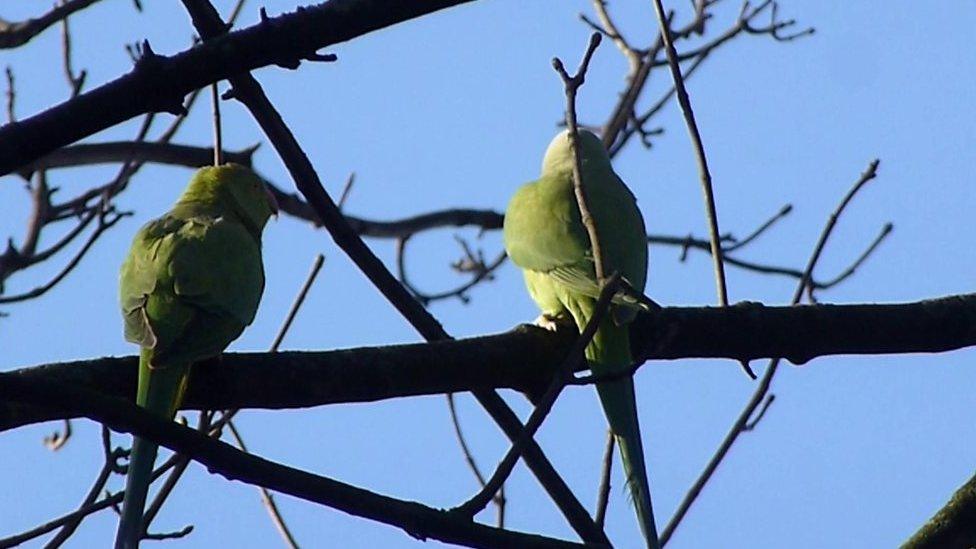
- Attribution